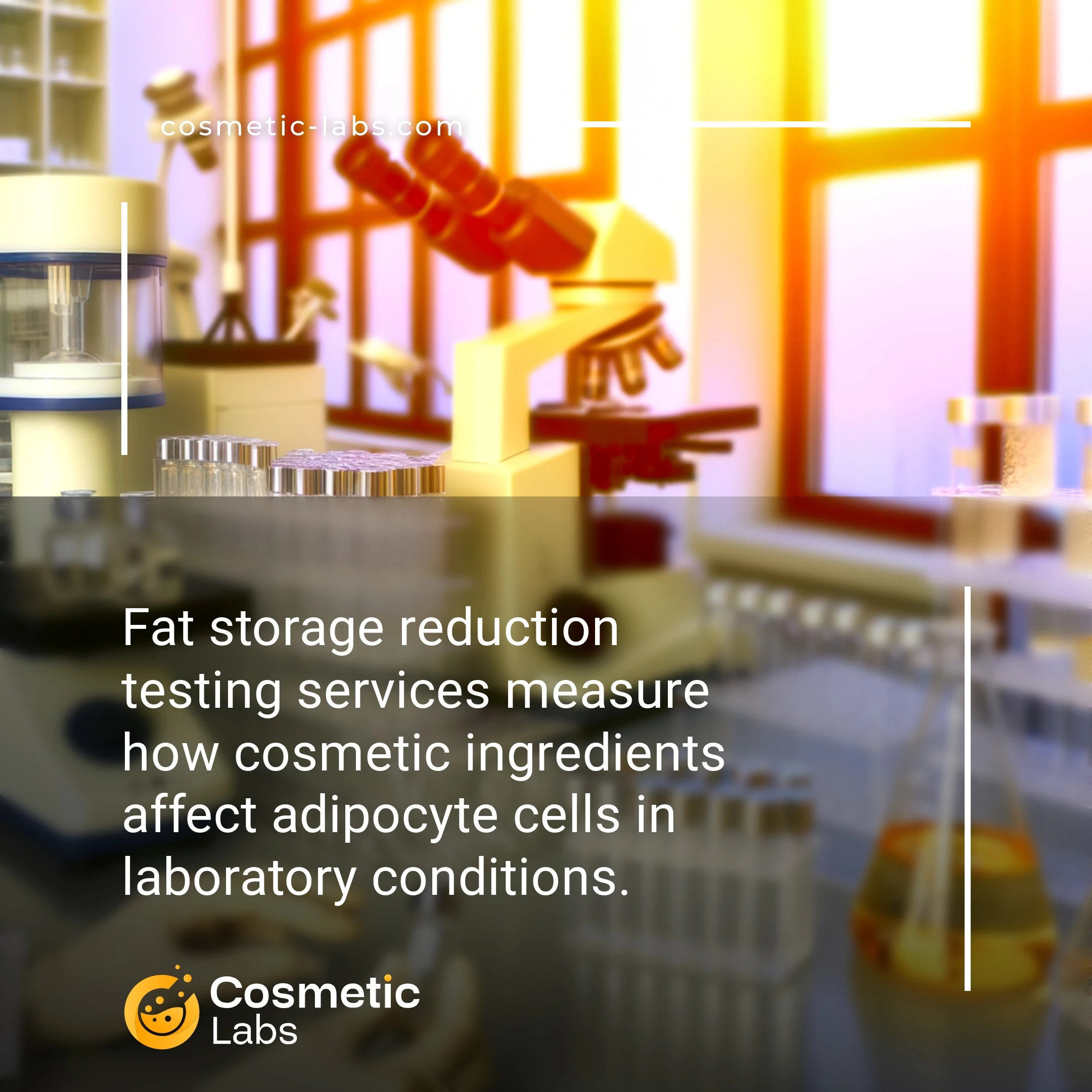Fat Reduction Testing Services for Cosmetic Brands

What is Fat storage reduction testing?
Fat storage reduction testing services validate your slimming cosmetic formulations through controlled laboratory protocols that measure adipocyte activity and lipid metabolism changes. Our partner labs use standardized cell culture models to quantify how your active ingredients affect fat cell size, lipolysis rates, and triglyceride accumulation—providing the scientific data you need for product claims and regulatory submissions.
Why do you need this service?
Cosmetic brands use adipocyte testing protocols to validate slimming cream formulations before market launch, measuring fat cell reduction rates and metabolic changes in controlled laboratory conditions. These services help you demonstrate product efficacy through standardized assays that track lipolysis activity and cellular responses, delivering quantifiable data for regulatory submissions and marketing claims that build consumer trust in your anti-cellulite and body contouring products.
Who provides Fat storage reduction testing services?
All cosmetic labs providing Fat storage reduction testing services
There is no company providing these services at the moment.
Adipocyte Reduction Testing Services
Specialized labs on our platform validate your slimming formulations through targeted adipocyte reduction testing that measures fat cell breakdown and metabolic changes. These preclinical studies provide the scientific backing you need to support product claims and regulatory submissions.
In Vitro Fat Cell Analysis
Labs culture mature adipocytes and expose them to your active ingredients to measure lipolysis rates and fat storage inhibition. Testing protocols include lipid accumulation assays, glycerol release measurements, and cell viability studies over 24-72 hour periods.
Key testing parameters include:
- Triglyceride content reduction (typically 15-40% for effective compounds)
- Free fatty acid release quantification
- Adipogenesis inhibition at various concentrations
- Cytotoxicity screening to ensure safety thresholds
Metabolic Pathway Evaluation
Advanced testing examines how your ingredients affect fat metabolism at the molecular level. Labs analyze enzyme activity, gene expression changes, and protein markers that control fat storage and breakdown processes.
Testing focuses on key metabolic targets:
- Hormone-sensitive lipase activation
- PPAR-gamma receptor modulation
- Adenylyl cyclase pathway stimulation
- Mitochondrial function enhancement
Connect with specialized labs through our platform to validate your fat reduction claims with robust scientific data that supports your product development goals.
Practical Applications of Fat Storage Reduction Testing Services
Cosmetic labs use fat storage reduction testing services to validate slimming claims across multiple product categories, from topical creams to dietary supplements.
Topical Slimming Product Development
Labs test anti-cellulite creams and body contouring serums using adipocyte cell cultures to measure lipid accumulation changes. These in vitro assays track fat cell diameter reduction and lipolysis activation within 24-72 hours of ingredient exposure.
Testing protocols include caffeine-based formulations, peptide complexes, and botanical extracts like forskolin or green tea. Results show percentage reductions in triglyceride content, helping brands substantiate “reduces appearance of cellulite” claims with quantifiable data.
Nutraceutical Efficacy Validation
Supplement manufacturers rely on adipocyte testing to prove fat-burning ingredients work at the cellular level. Labs expose cultured fat cells to compounds like L-carnitine, chromium picolinate, or garcinia cambogia extracts.
Testing measures metabolic markers including glycerol release, fatty acid oxidation rates, and mitochondrial activity. These biomarkers provide scientific backing for weight management claims, supporting regulatory submissions and marketing materials with measurable cellular responses.
| Test Parameter | Measurement Method | Typical Results Timeline | Claim Support |
|---|---|---|---|
| Lipid Accumulation | Oil Red O Staining | 48-96 hours | Fat reduction claims |
| Lipolysis Activity | Glycerol Release Assay | 24-72 hours | Fat burning efficacy |
| Cell Viability | MTT Assay | 24 hours | Safety validation |
| Gene Expression | qPCR Analysis | 6-48 hours | Mechanism of action |
Ready to validate your slimming product’s efficacy? Contact specialized cosmetic labs on our platform to discuss your fat storage reduction testing requirements and regulatory strategy.
